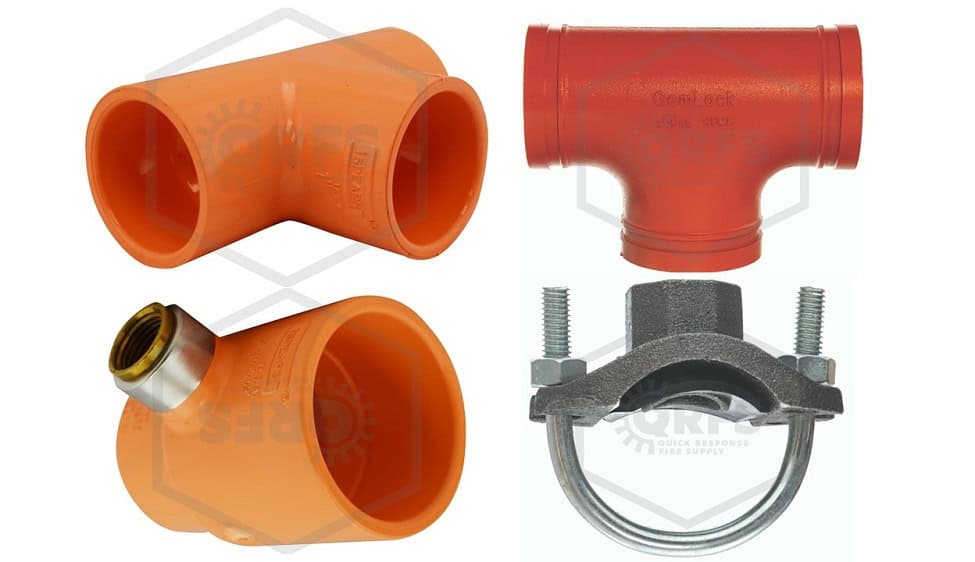All tees have 3 outlet sizes—know the measurement format to ensure you get the right equipment!
Pipe tees feature three openings: two in line with and opposite each other and the third at 90 degrees. This arrangement makes tees useful for splitting a fluid stream into two or combining two streams into one, and reducing tees enable connecting different fittings and sprinklers.
In fire sprinkler systems, tees might join fire department connections, drains, and test headers to risers, connect cross mains to risers and branch lines to cross mains, or attach fire sprinklers to branch lines.
But how do you get the right-sized tee if it’s got different-sized holes? To confuse things, some tees have multiple connection types—like grooved and threaded—on the same part.
Picking the proper tee can be confusing if you don’t know the sizing format. This article explains:
- Sizing straight tees, reducing tees, and mechanical tees
- Getting the right type of connections with adapters
QRFS is your connection for CPVC fittings and grooved pipe fittings—including straight CPVC tees, mechanical tees, grooved tees, reducing tees, CPVC elbows, reducers, CPVC couplings, and more. Check out our large range of fire protection equipment supplies today!
Sizing & nomenclature for mechanical, straight, and reducing tees
First, let’s explain the sizes of two different types of tees: standard tees (which come in straight and reducing varieties) and mechanical tees for grooved pipe. It bears mentioning that any time we talk about pipe sizes here, we’re using nominal size, not actual size.
Dimensions for standard tees—straight vs reducing tees
A straight tee (also called an equal tee) is so named because all three of its openings are the same size. You’ll see straight tee sizes given with just one dimension, though you might also see “[equal measurement] by [equal measurement] by [equal measurement].” For example, a 6-inch straight tee (aka 6 inches x 6 inches x 6 inches) looks like this:
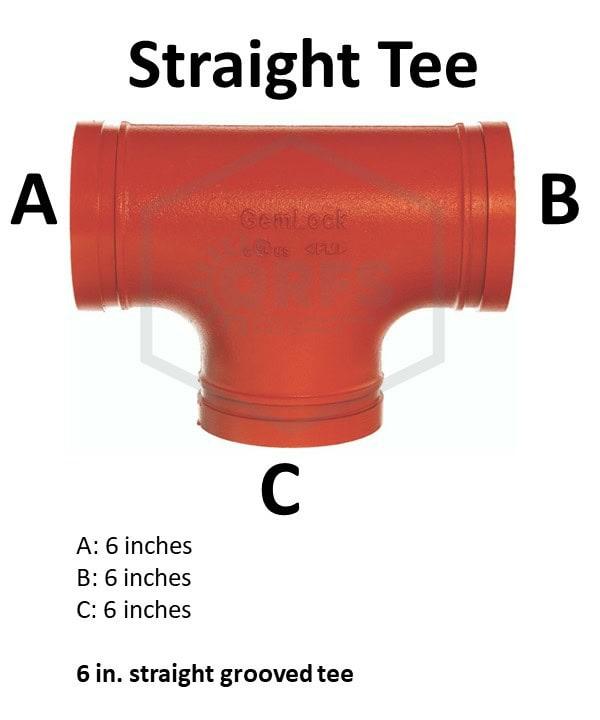
A reducing tee has outlets of different sizes. To make it clear which outlet is which size, manufacturers write their tee dimensions in the format A x B x C; each letter stands for the nominal size of a tee opening.
- A and B are the two in-line openings. In other words, if you held A up to your eye, you could see out of B.
- C is at a right angle to A and B.
There are three general types of reducing tees:
1. In the first type, A and B are the same size, and C is smaller. Since A and B are equal, this format is easy to understand. An example dimension is 6 in. x 6 in. x 2 in.
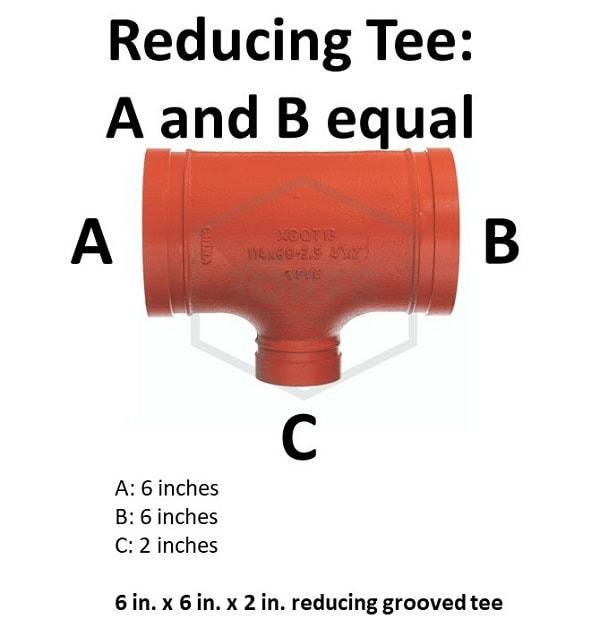
2. In another type, B and C are the same size, and A is larger. To understand this scheme, remember that the last measurement, C, is always at a right angle to the other two sides.
Functionally, it doesn’t matter which of the two in-line openings is A or B—you can always flip the tee around. Usually, the bigger one is A. For example, a 1 in. x 3/4 in. x 3/4 in. tee would look like this:
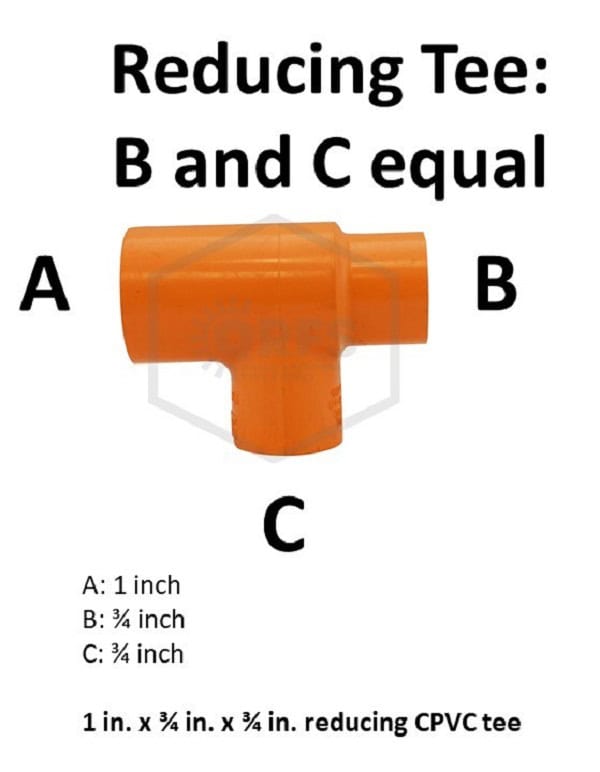
3. Finally, all openings of the tee could be different sizes. Again, you can easily get the right part by remembering that the last measurement, C, is the right-angle outlet, and A and B are interchangeable because tees can be flipped.
As before, usually, the larger of the two comes first. Here’s what a 1-1/4 in. x 1 in. x 1/2 in. reducing tee looks like:
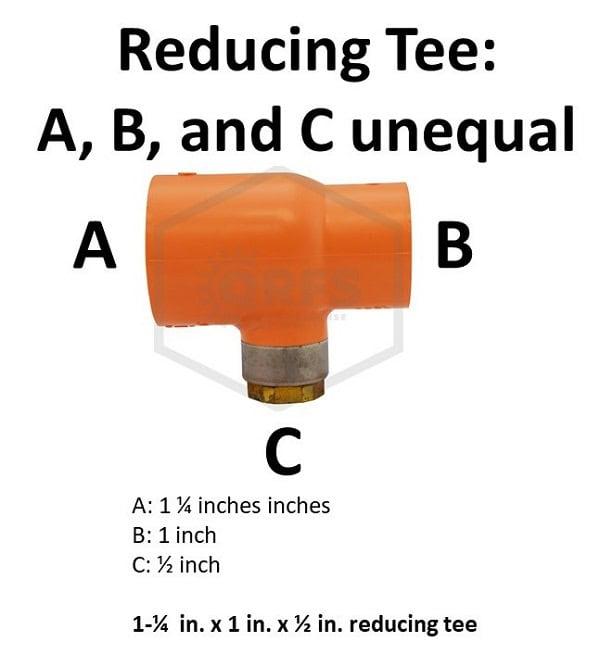
In this example, you’ll see that one of the outlets has a different joint type than the others—it’s threaded instead of a CPVC slip joint. This is called an adapter—more on that later!
Dimensions of mechanical tees
Grooved pipe doesn’t always use “normal” tees. Instead, grooved piping systems allow for something called a mechanical tee.
Mechanical tees involve cutting a hole into a pipe and clamping on joints around the pipe’s circumference. You can read all about mechanical tees in our previous blog.
Unlike other tees, mechanical tees only have two dimensions: the size of the pipe (and clamp and gasket surrounding it) and the size of the outlet. A 4 in. x 2 in. mechanical tee fits onto a 4-inch pipe and has a 2-inch perpendicular outlet. Check out this picture for clarification:
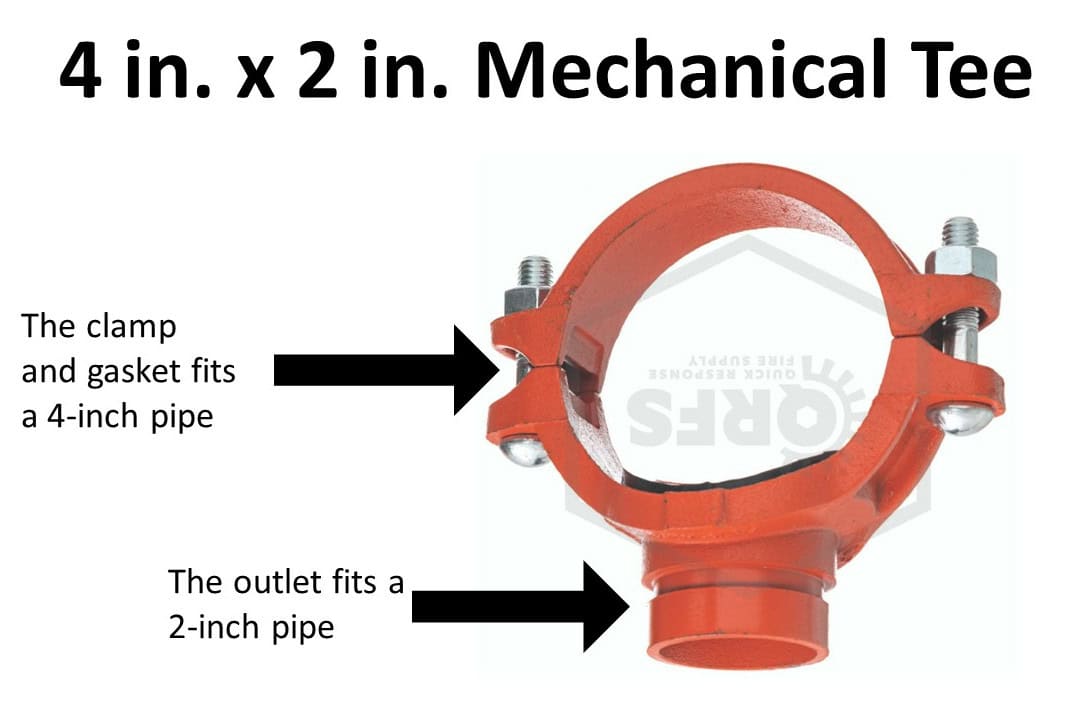
Getting the right type of connections with adapters
Depending on the type of pipe used, PVC slip joints or grooved joints are commonly used in fire protection to join pipes. But fire sprinkler heads almost universally require a threaded fitting to attach to pipes. That’s where tees with multiple size-and-connection combinations—adapter tees—come in handy.
Just like with tee size, adapter tee joint types are given in the A x B x C format. But instead of only describing size, each letter also represents the joint type.
As before, A and B are the two openings that are in line with one another. C, the perpendicular opening, usually has the different connection type. For example, tees that join fire sprinklers to 1-inch branch lines might be 1 in. x 1 in. x ½ in. with ends marked slip x slip x FNPT (meaning female NPT threaded).
This picture should make everything clear:
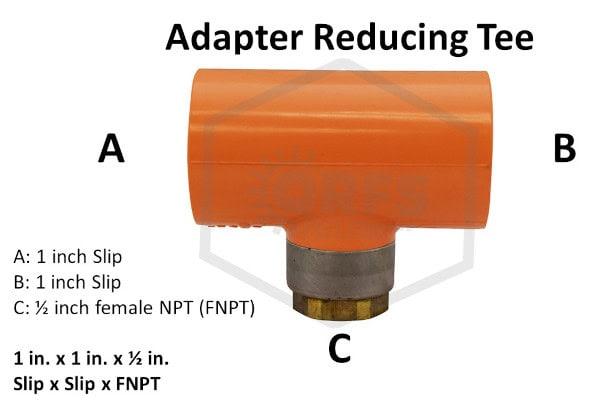
For grooved pipe, some mechanical tees are also adapters used to switch connection types. Again, in fire protection, this is often used to attach threaded fire sprinklers to branch lines. Understanding the outlet type is easy. By default, mechanical tees have grooved outlets. If the manufacturer calls it a “threaded mechanical tee,” the outlet is threaded.
Understanding pipe tee sizes is as easy as A x B x C
Tees are important parts of any plumbing or fire protection system. But with three different openings, finding the right-sized part with the correct connection can be slightly confusing—unless you know the proper notation.
Fortunately, it’s as easy as A x B x C. The outlet at a right angle to the other two—what we’ve called C—is always last in the sequence. A and B, in line with one another, are functionally interchangeable because tees can be flipped.
Need tees? QRFS has you covered. Check out our fire-protection-approved CPVC tees and other CPVC pipe and fittings, plus iron grooved tees and other grooved fittings.
If you can’t find what you need on our website, contact us at 888.361.6662 or support@qrfs.com.
This blog was originally posted at blog.qrfs.com. If this article helped you, check us out at Facebook.com/QuickResponseFireSupply or on Twitter @QuickResponseFS.


